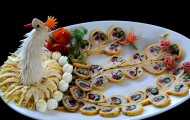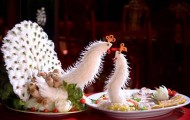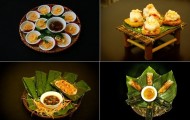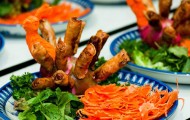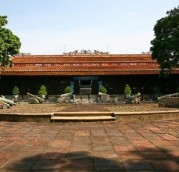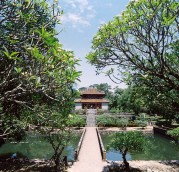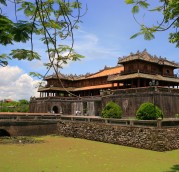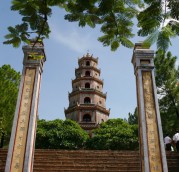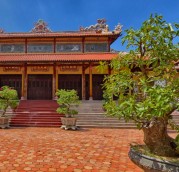Hue, situated on the banks of the tranquil Perfume River, is one of the most visited Vietnamese cities after Saigon, Hanoi or Danang. Once an important seat of learning and culture, as well as the imperial seat for nearly 150 years, it is slowly being rediscovered. This rather sleepy place is also the very city which once inspired the creation of the most sophisticated Vietnamese cuisine, and took vegetarian cuisine to even greater heights than those reached by masterful Chinese chefs.
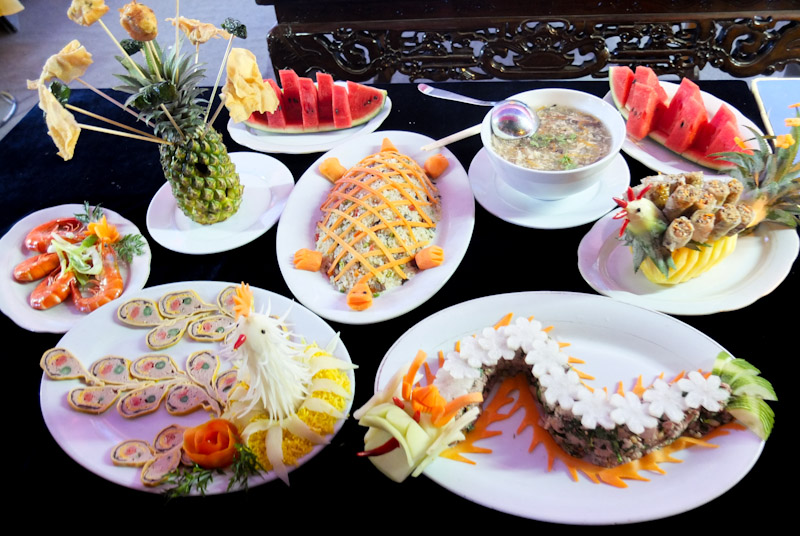
Hue traditionally served as a cultural, educational and religious center - it is the site of the country's most important Buddhist monasteries and temples - but from 1802 to 1945 it was also the political capital of Vietnam, under the thirteen emperors of the Nguyen Dynasty. Major tourist attractions such as the Imperial Palace and the emperors' tombs still suggest a time of great affluence. Emperor Tu Duc (1848-1883), for example, whose expansive tomb reflects his once-opulent lifestyle, is said to have demanded that his morning tea be made only from the drops of water collected by his servants from lotus leaves on the lake within the Imperial City.
A typical imperial banquet today would include perhaps a dozen dishes, such as a beautifully fragrant, peppery chicken soup with lotus seeds (sup ga), crisp, golden brown spring rolls (nem ran), delicate rice flour patties stuffed with minced shrimp (banh Hue), grilled pork in rice paper (thit nuong) served with a tasty peanut sauce, delicious crab claws stuffed with pork (cuaphich hot), and the famous minced shrimp wrapped around sugar cane (cha tom lui mia), known in the south as chao tom. Main dishes might include fish grilled in banana leaf (ca nuong la chuoi), pungent beef in wild betel leaves (bo la lot), rice with vegetables (com Hue), gently sauteed shrimp with mushrooms (tom xao hanh nam), and finally the glutinous rice dessert, which comes in a perfectly formed little box made from banana leaf. Its name literally translates as husband-and-wife cake (phu the).
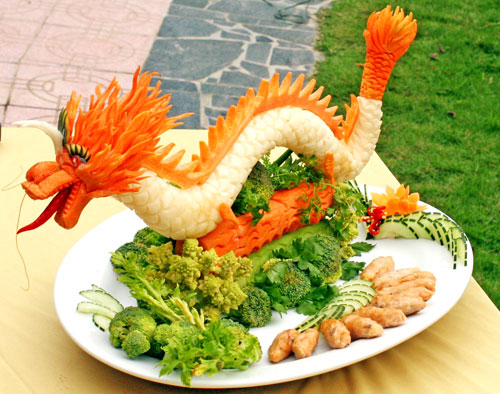
These dishes are actually variations of those served in other parts of Vietnam, and the ingredients may be simple vegetables, eggs or fish, rather than exotic sea delicacies or the best cuts of meat. What sets these dishes apart is the sophisticated cooking techniques and the presentation.
Due to its size and relatively small population, Hue today is not a culinary mecca compared with Ho Chi Minh City or Hanoi. There is, however, a renewed interest in the cuisine of Hue, and a number of modern Vietnamese chefs have made it their mission to turn the simple art of cooking into something extraordinary, and restore imperial cuisine to its former glory. |


